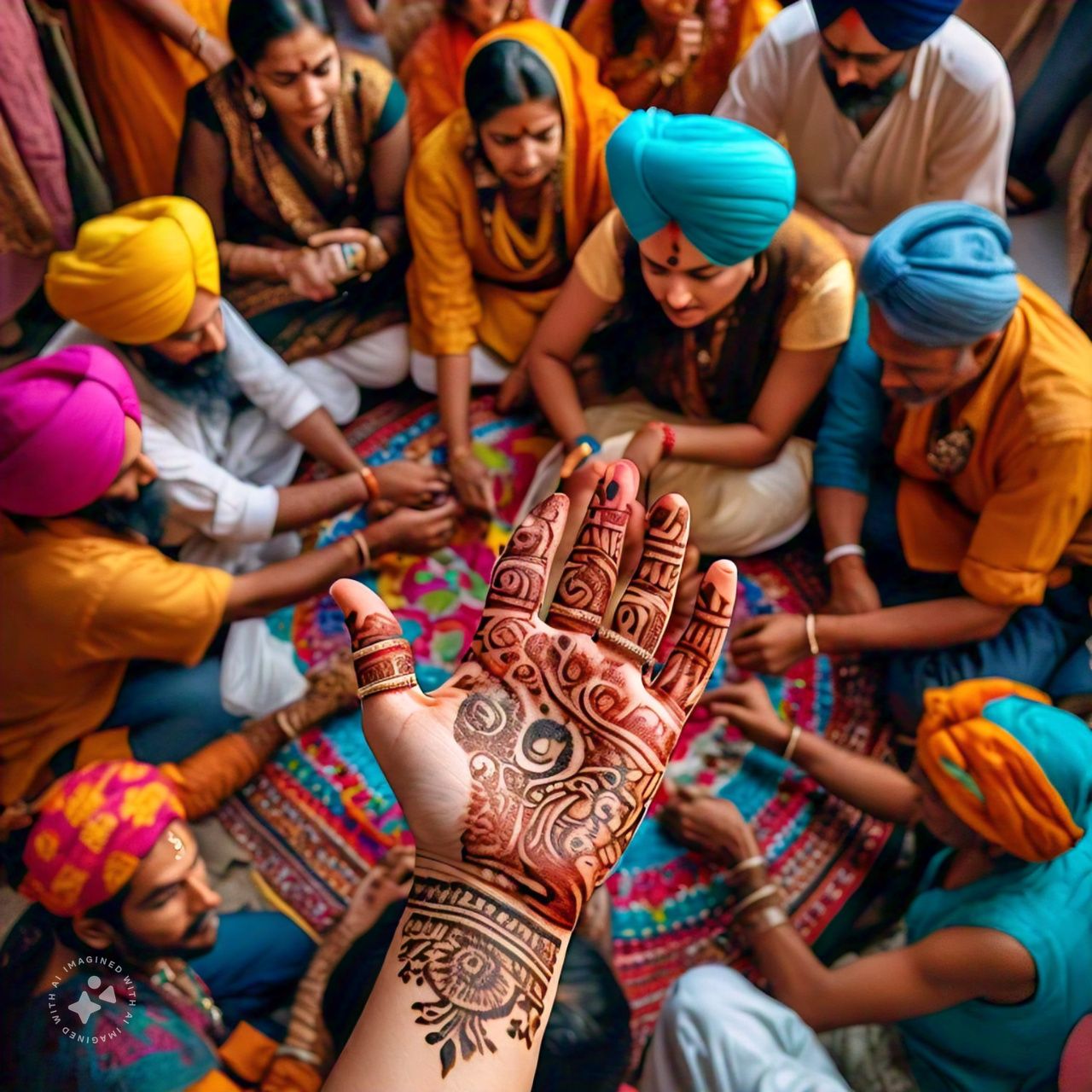Introduction
The human body has always held significant meaning across cultures, serving as a canvas for identity, spirituality, and societal norms. In India, the body embodies complex narratives influenced by history, mythology, and modern challenges. As a diverse nation, India’s relationship with the body encompasses various perspectives, from traditional views to contemporary movements advocating for body positivity. This article delves into the essence of the body in Indian culture, examining historical contexts, cultural narratives, and the evolving understanding of body identity across genders.
The Essence of the Body in Indian Culture
In Indian culture, the body is more than a physical entity; it is a reflection of one’s identity, spirituality, and social status. Traditionally, the body has been seen as a vessel for the soul, intertwined with religious beliefs and practices. The significance of physical forms can be traced back to ancient texts that emphasise the importance of maintaining a pure and healthy body. The body is often celebrated through rituals, dance, and art, portraying the intricate relationship between the individual and the cosmos. This connection underscores how the body is revered, representing not only personal identity but also a communal heritage deeply rooted in the fabric of society.
Purpose of the Article
This article aims to explore the multifaceted relationship between the body and identity in Indian culture. By examining historical perspectives, cultural narratives, and contemporary movements, we can better understand how the body is perceived, represented, and lived. This discussion is essential not only for acknowledging the rich tapestry of Indian identity but also for addressing the challenges faced by individuals in a rapidly changing society. We seek to highlight voices from diverse communities, illuminating their experiences and advocating for a future where body narratives are inclusive and empowering.
Historical Context
The historical context of body perception in India is complex, shaped by various philosophical, religious, and cultural influences. Ancient Indian texts such as the Vedas and Upanishads offered a framework for understanding the body as a sacred entity. Over centuries, the influence of different dynasties, invaders, and colonial powers further complicated these narratives. During colonial rule, Western ideals of body image infiltrated Indian society, often imposing restrictive norms that contrasted sharply with traditional Indian beliefs. This period marked a significant shift, as the body began to be viewed through a more utilitarian lens, affecting how individuals perceived themselves and others in the socio-political landscape.
Traditional Views on the Body
Traditionally, the body in Indian culture is often viewed as a microcosm of the universe, embodying the principles of balance and harmony. Practices like yoga and Ayurveda emphasise the importance of nurturing the body through mindful living, aligning physical health with spiritual well-being. The body’s ability to connect with the divine is deeply ingrained in various rituals and ceremonies. This holistic understanding promotes the idea that a healthy body can lead to a peaceful mind and a harmonious life. However, these views are not monolithic; they vary across regions and communities, reflecting diverse beliefs and practices that shape individual and collective identities.
Colonial Perspectives and Their Impact
Colonialism profoundly influenced perceptions of the body in India, introducing Western ideals that often conflicted with indigenous beliefs. The British colonial narrative frequently portrayed Indian bodies as “other,” reinforcing stereotypes that dehumanised and marginalised local populations. This created a dichotomy where the Western body was seen as superior, leading to a rejection of traditional practices and aesthetics. The impact of this perspective can still be felt today, as many continue to grapple with the legacy of colonial attitudes toward body image, health, and beauty standards, navigating a complex interplay between tradition and modernity.
Cultural Narratives
Cultural narratives surrounding the body in India are rich and diverse, shaped by mythology, folklore, and social customs. In many stories, the body is depicted as a site of transformation and resilience. Myths featuring deities and heroes often highlight the body’s potential for strength and beauty, while also cautioning against vanity and excess. These narratives serve not only to entertain but also to impart moral lessons about how individuals should regard their bodies. The intersection of body and identity in these stories fosters a sense of belonging and continuity, emphasising the importance of community and shared values in shaping one’s self-perception.
Body and Identity in Indian Society
In Indian society, the relationship between body and identity is intricate and multifaceted. The body often becomes a canvas for expressing cultural identity, influenced by factors such as caste, class, and religion. For many, body image is tied to societal expectations and norms, leading to various pressures regarding appearance and behaviour. This can manifest in both positive and negative ways, affecting mental health and self-esteem. The emergence of social movements advocating for body positivity seeks to challenge these norms, encouraging individuals to embrace their unique bodies and foster a more inclusive understanding of beauty that transcends societal boundaries.
Mythology and the Divine Body
Mythology plays a pivotal role in shaping perceptions of the body in India, particularly through the representation of divine figures. Deities are often depicted with idealised physical forms, symbolising strength, beauty, and divine qualities. These portrayals influence societal standards, leading many to aspire to these ideals. However, they also serve as a reminder of the transcendent nature of the body, highlighting its role in connecting the earthly with the divine. The stories of gods and goddesses emphasise the importance of self-acceptance and the celebration of diversity, inviting individuals to view their bodies as expressions of the divine.
Body and Gender
Women’s Bodies: Representation and Reality
Women’s bodies in Indian culture have historically been subject to intense scrutiny and regulation. Cultural narratives often portray idealised versions of femininity, emphasising modesty and purity. These representations can lead to unrealistic expectations, impacting women’s self-esteem and body image. Moreover, women’s bodies are frequently politicised, influencing issues such as access to healthcare, reproductive rights, and personal autonomy. Despite these challenges, women have increasingly begun to reclaim their narratives, advocating for representation that honours the diversity of experiences and body types.
Men’s Bodies: Expectations and Stereotypes
Men’s bodies are also steeped in societal expectations that dictate notions of strength and masculinity. The ideal male body is often portrayed as strong and muscular, leading to stereotypes that can pressure men to conform to narrow definitions of masculinity. This can create emotional and mental health challenges, as men grapple with the expectations to display strength while suppressing vulnerability. Addressing these stereotypes is crucial in promoting a healthier understanding of masculinity, encouraging men to embrace their bodies in all forms and express their emotions without fear of judgement.
Trans Bodies: Challenges and Triumphs
Transgender individuals in India face unique challenges related to their bodies, navigating a society that often marginalises their identities. The journey of self-acceptance and visibility is fraught with difficulties, including discrimination and violence. However, there is also a growing recognition of the need for inclusivity and representation. Activism within the trans community has led to greater awareness and acceptance, fostering a dialogue that challenges societal norms. Celebrating trans bodies and their experiences is essential in promoting a more inclusive society that recognizes the validity of diverse identities.
Body Positivity and Activism
Emerging Movements in Body Positivity
The body positivity movement has gained momentum in India, challenging conventional beauty standards and advocating for self-acceptance. Activists are using various platforms to share their stories, encouraging individuals to embrace their unique bodies regardless of societal expectations. This movement seeks to dismantle harmful stereotypes, promoting inclusivity for all body types, shapes, and sizes. By fostering a culture of acceptance, body positivity encourages individuals to appreciate their bodies for what they are, rather than how they conform to external ideals.
Influence of Social Media on Body Image
Social media plays a dual role in shaping body image in contemporary India. On one hand, it can perpetuate unrealistic beauty standards through curated images and filters, creating pressure to conform. On the other hand, social media also provides a platform for diverse voices advocating for body positivity and authenticity. Influencers and activists are increasingly using these platforms to challenge norms, share personal stories, and promote a more inclusive narrative around body image. The challenge lies in navigating these spaces mindfully, recognizing the power of representation while critiquing harmful standards.
Health and Wellness
Ayurveda and the Holistic Body
Ayurveda, the ancient Indian system of medicine, emphasises a holistic understanding of health that integrates the body, mind, and spirit. It promotes the idea that well-being is achieved through balance, advocating for personalised approaches to health. This traditional practice offers insights into body awareness, encouraging individuals to listen to their bodies and make lifestyle choices that align with their unique needs. By incorporating principles of Ayurveda into daily life, many find a path to greater health and vitality, fostering a deeper connection with their physical selves.
Modern Health Challenges and Body Awareness
In modern India, individuals face a myriad of health challenges influenced by lifestyle changes, urbanisation, and the rise of technology. Issues such as obesity, mental health disorders, and lifestyle-related diseases are becoming increasingly prevalent. Amidst these challenges, there is a growing awareness of the importance of body positivity and self-care. Educational initiatives and community programs are emerging to promote health literacy, emphasising the significance of maintaining a healthy body while fostering a positive body image. This awareness is crucial in empowering individuals to prioritise their well-being.
Art and the Body
Body in Indian Art: Historical Perspectives
Throughout history, the body has been a central theme in Indian art, reflecting cultural values, religious beliefs, and societal norms. Traditional art forms, such as sculpture, painting, and dance, often depict the body as an expression of beauty, grace, and divinity. Temples and ancient texts celebrate the human form, showcasing the intricacies of movement and emotion. These artistic representations not only provide insight into the historical context of body narratives but also serve as a medium for exploring deeper philosophical themes related to existence and identity.
Contemporary Artistic Expressions
In contemporary art, the body continues to be a powerful subject, with artists using various mediums to challenge perceptions and provoke thought. Many contemporary works explore issues of body image, identity, and social justice, reflecting the complexities of modern life. Artists often draw from personal experiences, creating pieces that resonate with audiences and spark dialogue. This artistic exploration of the body encourages viewers to reflect on their own perceptions and societal norms, fostering a deeper understanding of the diverse narratives that shape our understanding of identity.
Intersectionality and the Body
Caste, Class, and Body Politics
The politics of body image in India is deeply intertwined with issues of caste and class. Societal hierarchies often dictate how bodies are perceived and valued, leading to discrimination and marginalisation. Individuals from lower castes or economically disadvantaged backgrounds may face additional challenges related to body image, often experiencing stigma and exclusion. Addressing these intersections is crucial for fostering a more inclusive understanding of body narratives, recognizing the diverse experiences that shape individuals’ relationships with their bodies.
Regional Variations in Body Narratives
India’s vast cultural diversity means that body narratives vary significantly across regions. Different communities have unique beliefs and practices surrounding the body, influenced by local customs, traditions, and historical contexts. These regional variations contribute to a rich tapestry of identities, shaping how individuals perceive themselves and each other. By acknowledging and celebrating these differences, we can foster a more inclusive dialogue that respects the complexity of body narratives in Indian society.
Personal Stories
Voices from Diverse Communities
Personal stories play a vital role in illustrating the diverse experiences related to body identity in India. Individuals from various backgrounds share their journeys of self-acceptance, resilience, and empowerment, highlighting the challenges they face in a society that often imposes rigid standards. These narratives provide insight into the nuances of body image, illustrating how culture, gender, and socio-economic factors shape perceptions. By amplifying these voices, we can foster a deeper understanding of the myriad ways individuals navigate their relationships with their bodies.
Impact of Social Change on Personal Experiences
Social change in India has led to shifting attitudes towards body image and identity. Movements advocating for gender equality, LGBTQ+ rights, and body positivity have empowered individuals to challenge societal norms. Many are now speaking out about their experiences, fostering a culture of openness and acceptance. This shift is crucial in shaping a future where diverse bodies are celebrated, and individuals feel free to express themselves without fear of judgement. The ongoing dialogue surrounding body narratives is essential for promoting social change and fostering inclusivity.
Conclusion
The future of body narratives in India holds promise as more individuals embrace diversity and advocate for body positivity. Continued dialogue around body image, health, and identity is essential in fostering an inclusive society that values all bodies. By recognizing the complexities of these narratives, we can work towards a future where everyone feels empowered to embrace their unique selves, free from societal pressures and constraints. The journey towards body acceptance and understanding is ongoing, and it is crucial to cultivate spaces where diverse voices can be heard and celebrated.
FAQs
What is “Naked Truths: Indian Bodies and Their Stories”?
“Naked Truths: Indian Bodies and Their Stories” is a collection that explores the diverse narratives surrounding bodies in India. It highlights personal experiences, cultural beliefs, and societal norms, aiming to foster a deeper understanding of identity and body image in contemporary Indian society.
Why are body narratives important in India?
Body narratives are crucial in India because they reflect cultural values, social norms, and personal experiences. They help us understand how identity is shaped by factors like gender, caste, and class, encouraging conversations about body positivity, acceptance, and inclusivity.
Who are the contributors to this collection?
The contributors to “Naked Truths” include writers, activists, and artists from various backgrounds. Their diverse perspectives enrich the collection, showcasing a wide range of experiences related to body image, identity, and societal expectations in India.
How does the collection address gender issues?
The collection addresses gender issues by exploring how societal expectations affect men and women differently. It highlights the challenges faced by women regarding body image and empowerment while also discussing the pressures men encounter regarding masculinity and body ideals.



